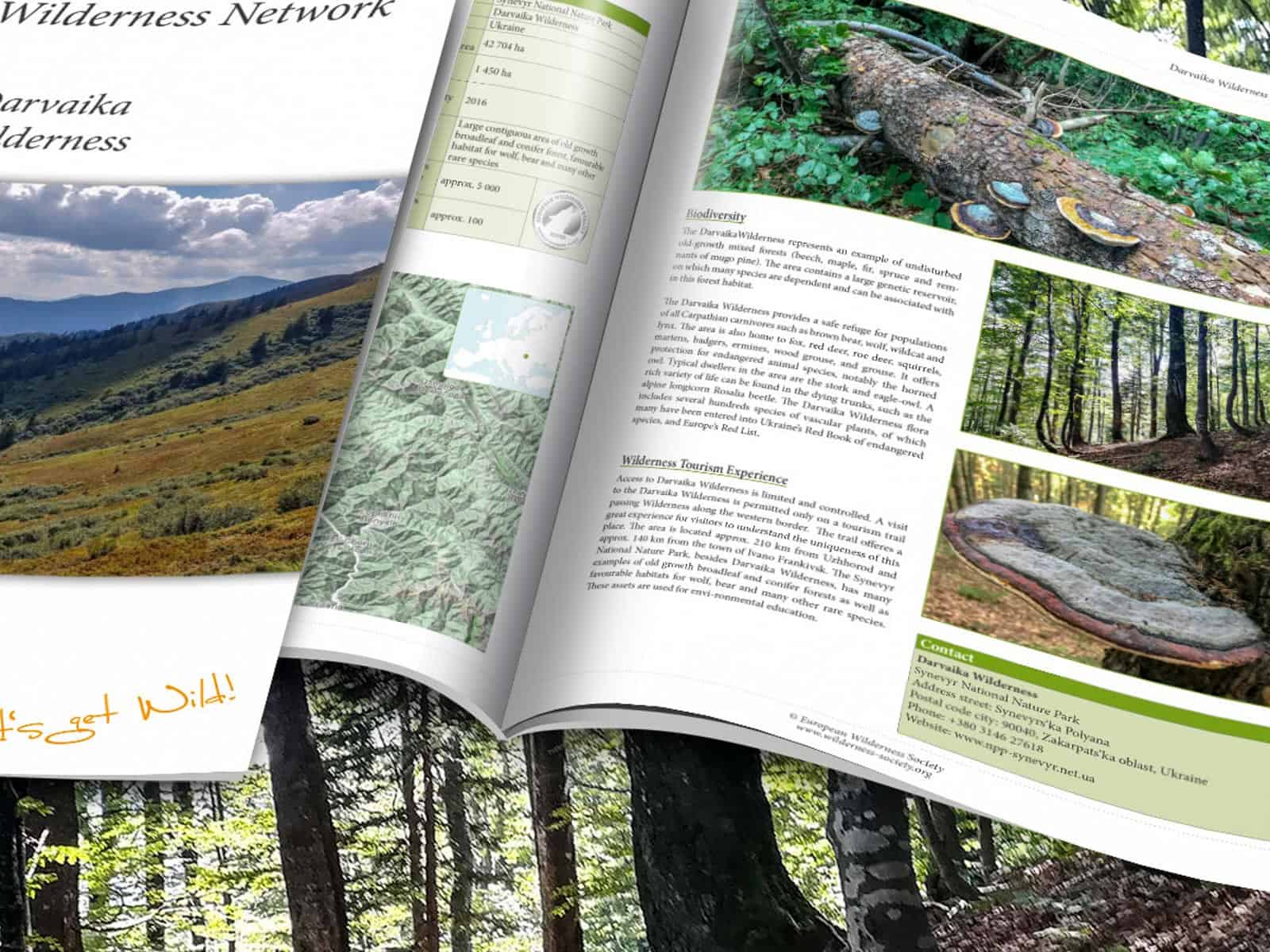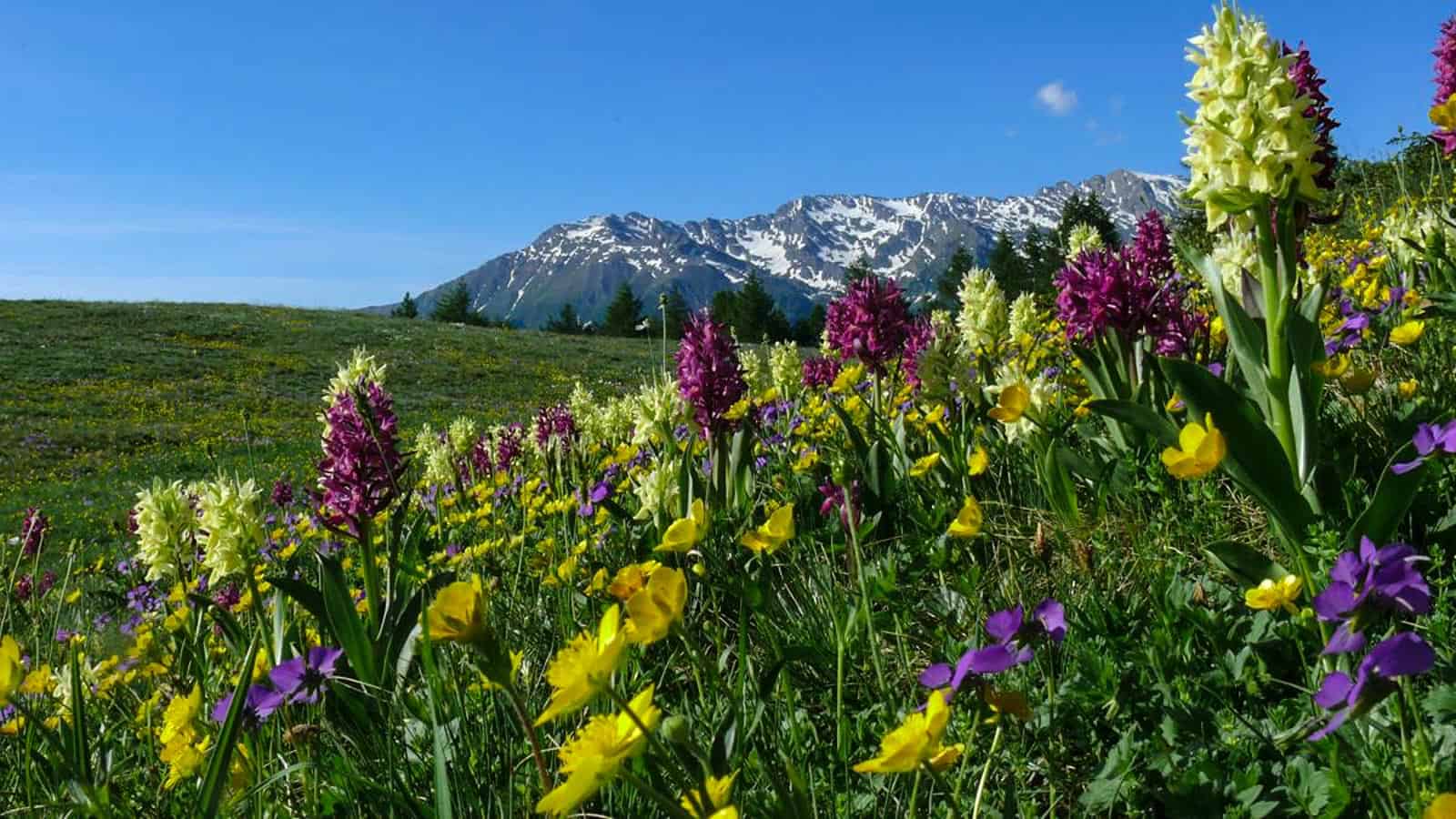Disappearing Wilderness in Komovi Mountains
The Komovi Mountains are part of Montenegro’s large mountainous labyrinth, including several less-known mountains massifs that surround the well-known Prokletije Mountains. It is a group of wild mountains, which includes several areas that are already in the scope of the European Wilderness Society for the European Wilderness Network.
We are aware that this corner of Europe has several legally designated protected areas. We also know that there are still areas with potential to qualify as European Wilderness, but are currently without any legal protection. Local people use these areas for livestock grazing and intensive extractive forestry. We learnt just recently that the speed at which extraction takes place is dangerously high. One day there is a wild valley without any access, the next day it is full of bulldozer roar and chainsaw squeal. The text and pictures provided by our partner Researcher Ondrej Kameniar, Wilderness Advocate provide such testimony.

Please read also: Wilderness in Albania and Romania
Komovi – the wildest Mountains in Balkan
Prokletije with adjacent mountains such as Komovi, Maglić and others is the wildest and most remote area on Balkan. It is a vast, hardly penetrable area on the borders of Albania, Montenegro and Kosovo. The highest peak of this area is Maja Jezerce (2696 m.n.m.). This region has been subject of interest already for several years for professional researcher Ondrej Kameniar, Wilderness Advocate, from the Czech University of Life Sciences. Last autumn, he visited this area again, this time with friend, Marek Kochan, also a dedicated Wilderness Advocate.
I have been interested in this region for a long time and I was there already four times. I visited mostly the Albanian part. Last October I decided to go to the Montenegro part. The driving force behind this trip was the interest to find old-growth forest for our research. Last year, we already established research plots on two localities in the Albanian part of Prokletije. We found there very nice beech and beech-fir-spruce forest. One of these localities is today in UNESCO network.

The first part of his exploration focused on Komovi Mountains. Mountains where the highest point is Kom Kućki, with an elevation of 2487 m. The mountain range is located just right next to Prokletije Mountains. Forest and man-made meadows are covering the lower part of Komovi Mountains. Additionally, widespread erosion is visible on many meadows.
We started our trip driving by car to the town Kolašin in Montenegro, then to Mateševo and finally to the remote mountain village Opasanica. From there everything depended on our muscle power. The first impression was not very positive: big logging trucks, new roads and clearcuts. We were well prepared for this trip, but this was a big surprise. We did not get this information, neither on the latest satellite images. But higher in the mountains, we found what we were looking for, large old forest with minimal signs of human presence.

Wilderness potential in Komovi Mountains
The conclusions of this Wilderness exploration trip: Although people used large parts of this area for a long time with extensive forestry and grazing, there are still large areas of almost untouched forest. Remoteness and steep slopes were the main factors of forest survival. Also, „managed“ parts of mountains were interesting to see. Signs of the spontaneous land restoration were widely visible. Still, visible signs of traditional human impact were mostly decades old.
In more accessible areas, especially around old roads or ridges, fir was often completely missing. This is the result of so-called „shepherds management“. That means that shepherds used fir for timber for a long time. The outcome of this traditionally management approach is a forest with high conservation value. The forest has a pretty good natural structure and large amounts of dead wood. Also other important aspects of natural forest are not rare. The trees have big dimensions. Fir up to 130 cm diameter at chest height was not unique. Furthermore, trees have cavities and other special microhabitats that are important for forest biodiversity. There are also stands of natural alder (Alnus sp.) along the bigger streams. Simply said, in comparision with most of European forests, we can consider this forest in Komovi Mountains as high valued of even a WILDForest.
Race with time
Currently, fresh clearcuts are replacing this natural forest. Industrial logging is gradually replacing low-intensity shepherds management, which can quickly destroy valuable forest. Despite of this threat, there are still large contiguous areas of well preserved forest and complexes of natural ecosystems.
Now it it race with time. If the fast effective protection will take place, large forest areas can easily develop to the stage of “secondary old-growth forest“. There we can also find true old-growth sites. This however require further exploring of the polygon on western side of Knezelska rijeka (Knezelska River) and other localities. The threats are signs of ongoing large scale logging operation. If we do not stop this, another part of European Wilderness will quickly disappear forever. Most of all, there is one additional argument why this areas need to be protected: This place is too nice to be logged.

Academic sector collect Wilderness arguments
The Department of Forest Eology on FLD ČZU (Faculty of forestry and wood sciences, University of Life Sciences in Praha) with head Prof. Ing. Miroslav Svoboda, Ph.D. is working on research of forests with no or minimal human impact. We like to call them old-growth forests and virgin forests.
The research is focused on many European countries, but especially in the Carpathians and Balkan peninsula. Using dendrochronology and other methods, the Department of Forest Ecology brings a lot of valuable information about long-term functioning of forest ecosystems and about mechanism of natural disturbances.















In addition, the research also focuses on forest structure, carbon sequestration, biodiversity, forest resilience and relationships between all these processes. Main issue is to contribute to sustainable land use, whose part is also protection of functioning natural ecosystems.








